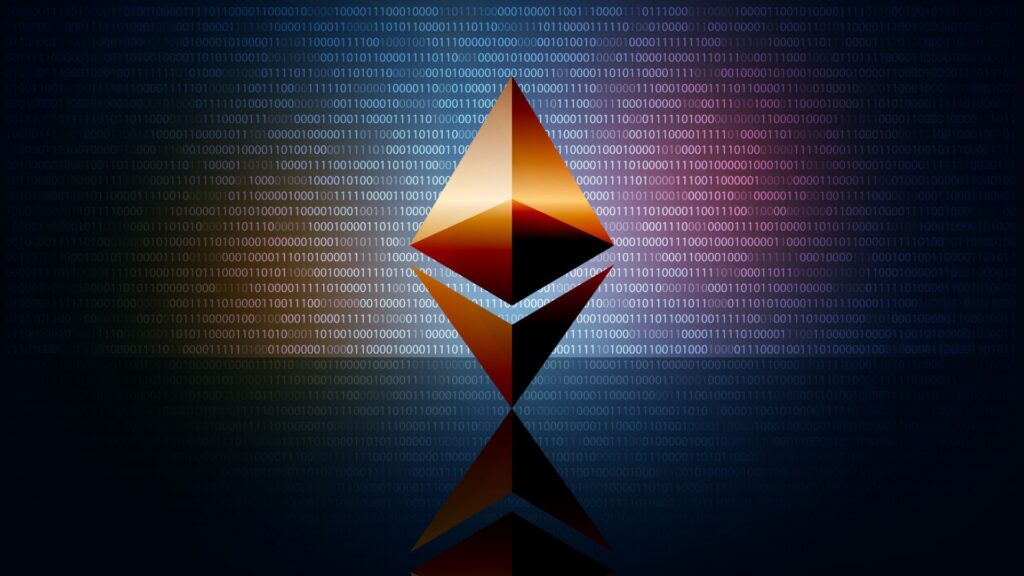The term "tokenomics" describes an economic model based on the use of digital assets. It encompasses various elements related to the creation, distribution, buying, and selling of tokens.
The primary purpose of tokenomics is to manage digital assets and create an economic model that stimulates participation and growth within a project's community. Tokens can serve various functions and be used for different purposes, from providing access to services to participating in project management.
It's worth noting that some tokens are so-called utility tokens: they have a specific purpose within a particular ecosystem. For example, AMP is used for a decentralized escrow system, while the DeFi Pulse Index token by Index Coop provides a decentralized index fund for top DeFi tokens, as mentioned in a Coin Desk article.
The Concept of Tokenomics
To understand the concept of tokenomics, we need to consider the two key components of the term:
A token is any cryptocurrency that operates on a blockchain and is designed to perform specific utility functions. In other words, these are digital assets created on an existing blockchain platform and work within the ecosystem of another coin.
Economics (as defined by Wikipedia) is a social science that studies the production, distribution, and consumption of goods and services.
By combining these two definitions, we can conclude that tokenomics is related to the economics of tokens and describes an economic model based on the use of digital assets.
Tokenomics is increasingly being used in the context of managing real-world assets (RWA). The tokenization process involves creating a blockchain-based token that digitally represents a tangible asset. In the context of RWA, tokenization breaks down such assets into smaller units represented by tokens, making them accessible to a wider range of investors. Each token represents a certain percentage of ownership in an asset, from real estate to artwork, goods, and more. An article on Medium describes the role of tokenomics in developing rules, protocols, and incentive mechanisms in detail.
Advantages of Tokenomics

1. Investment opportunities: tokens can be used to attract investments at the project's start or to finance various stages of its development.
2. Voting and decision-making: tokens can grant holders voting rights in strategic decisions within the project.
3. Rewards and incentives: tokens can be used to reward users for participating in the project, completing specific tasks, or achieving goals.
4. Liquidity and exchange: tokens can be exchanged for other digital assets, providing liquidity and the ability to use them for various purposes.
5. Enhancing decentralization: tokenomics encourages user participation and engagement, strengthening a decentralized model of project governance.
Tokenomics is an effective tool for creating a unique economic model based on digital assets, facilitating project development, attracting investments, and engaging the community. In the rapidly evolving world of blockchain and cryptocurrency technologies, tokenomics plays a crucial role in building the future digital economy. Tokenized digital securities are forecasted to reach nearly $4 trillion by 2030.
Differences Between Tokens and Coins
Tokens and coins are two primary terms used in the cryptocurrency world to describe digital assets. While these terms may seem similar and even interchangeable, there are significant differences between them.
Coins (such as Bitcoin, Ethereum, or Ripple) are native assets on their own blockchains. These coins can be used for transactions, store value, and other purposes within their own ecosystem. They are independent of other blockchains and can exist without relying on them.
Tokens, on the other hand, are digital assets created on top of other blockchains. For example, many projects on the Ethereum platform create their tokens based on the ERC-20 standard. Tokens can serve various purposes, such as funding projects through ICOs, creating digital assets for games, or managing assets in decentralized financial applications.
The primary difference between coins and tokens is that coins are native assets on their own blockchain, while tokens are created on top of other blockchains using standards and protocols. Tokens can be more flexible and versatile since they can be created on various platforms, while coins are limited to their own blockchain.
Tokenomics Using Bitcoin as an Example: What Is Bitcoin's Total Supply?

The total supply of Bitcoin refers to the maximum number of bitcoins that will ever exist, based on an algorithmically determined model of decreasing reward blocks. This is one of the key features of the Bitcoin cryptocurrency, making it unique and limited in supply.
Bitcoin's creator, Satoshi Nakamoto, set a limit on the total supply at 21 million bitcoins in the Bitcoin protocol. As new blocks are mined, the block reward gradually decreases through a process known as "halving." This process occurs approximately every 4 years, leading to a reduction in the rate at which new bitcoins are produced.
Thus, the total supply of Bitcoin approaches the limit of 21 million bitcoins, with this total expected to be reached around the year 2140, when all 21 million will have been mined. This creates a decentralized and limited monetary system that is not subject to centralized control or arbitrary issuance of additional coins.
The limited total supply of Bitcoin has several important consequences and advantages:
1. The limited supply of Bitcoin helps protect against inflation and preserves the value of the asset.
2. The understanding that Bitcoin's total supply is limited can drive demand for the cryptocurrency and accelerate its adoption for widespread use.
3. The limited supply encourages demand for Bitcoin because, as popularity increases, a limited number of coins grows.
Overall, the total supply of Bitcoin is a key feature of the cryptocurrency that promotes the asset’s stability and demand, while also ensuring its uniqueness and value as a decentralized digital currency.
Key Elements of Tokenomics
Tokenomics is an integral part of many blockchain projects and cryptocurrencies, encompassing the following key elements:
1. Token supply. This is the initial quantity of tokens that can be created and issued within a project. The token supply can be either limited or unlimited, depending on the project's established parameters.
2. Token utility. Tokens can serve various functions within a project's ecosystem, such as payments for services, voting on decision-making, participation in decentralized applications, and more. The token usage is determined by the project's rules and smart contracts.
3. Token distribution. The token distribution process defines the ways in which users can acquire tokens. This includes Initial Coin Offerings (ICOs), mining, partnerships, exchanges, and other methods.
4. Token burning. Token burning is the process of destroying a certain number of tokens, thereby reducing the total supply. This process can be used to manage inflation and maintain the token's price stability.
5. Incentive mechanisms. These mechanisms are designed to encourage users and token holders to participate in the project's ecosystem. They can include reward and incentive programs, discounts, network ownership offers, and other incentives for participation.
These key elements of tokenomics play a crucial role in the development of blockchain projects and ensure the sustainability and interaction within the ecosystem. Proper balancing and management of these elements help improve the project's market adoption, encourage user participation, and ensure the project's long-term sustainability.
Tokenomics in Practice: Examples of Successful Models

There are numerous successful examples where tokenomics has been implemented in practice, driving project growth and community engagement. Let’s look at a few successful cases.
Ethereum (ETH)
Ethereum is one of the best-known blockchain-based projects that uses its token, Ether (ETH), for various purposes. ETH is used to pay transaction fees on the Ethereum network, execute smart contracts, participate in protocol voting, and other functions. The Ethereum tokenomics model stimulates participant involvement and ensures network sustainability.
Binance Coin (BNB)
Binance Coin is a token used to pay transaction fees on the Binance exchange and participate in various promotions and events on the platform. BNB is also one of the leading cryptocurrencies by market capitalization, reflecting the successful implementation of the project’s tokenomics model.
Uniswap (UNI)
Uniswap is a decentralized exchange that uses the UNI token to stimulate liquidity and user participation in platform management. UNI holders can vote on protocol changes, get rewards for providing liquidity in pools, and participate in other ecosystem mechanisms.
Aave (AAVE)
Aave is a decentralized finance platform that uses the AAVE token for protocol management voting, decision-making on changes, and participation in reward programs. The AAVE tokenomics model ensures the platform's sustainability and growth.
These examples demonstrate how tokenomics can be effectively applied in practice to encourage participation, growth, and sustainability in blockchain and cryptocurrency projects. For instance, the real estate tokenization market reached $2.7 billion in 2022, and by 2032, it could reach $18.2 billion, according to Forbes.
Proper balancing of token supply, use cases, distribution, incentive mechanisms, and other key elements of tokenomics plays a critical role in the success and development of projects in this field.
The Future of Tokenomics
One of the key aspects of the future of tokenomics is the increasing diversity of tokens and their applications. As blockchain technologies and smart contracts evolve, users will be able to create various types of tokens for different purposes, ranging from asset management and voting to project financing and developing decentralized applications. This will lead to the emergence of new forms of digital assets that will be widely used across different industries.
Another important aspect of the future of tokenomics is the increased level of decentralization and autonomy of tokens. Thanks to smart contracts and decentralized platforms, tokens can operate independently of centralized institutions and control, offering greater freedom and transparency for users. This will enable the creation of new forms of organizations, financial relationships, and interactions among network participants.
The future of tokenomics is also linked to the development of new technologies and platforms for working with tokens. Blockchain project developers are actively working on improving the performance, scalability, and security of blockchains to ensure more efficient use of tokens and expand their functionality.
Overall, tokenomics promises revolutionary changes in the world of digital assets and blockchain technologies. With the potential for creating and using diverse tokens, increasing decentralization and autonomy, and the development of new technologies and platforms, we can expect a more efficient, transparent, and innovative digital economic space.